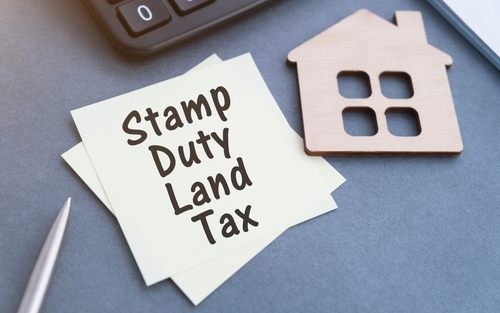Over the last few years Stamp Duty Land tax has become a headline tax. The introduction of the 3% higher rate for the purchase of additional dwellings in April 2016 was big news, but this was nothing in comparison to the SDLT holiday and changes we have seen during the pandemic.
The SDLT holiday has now come to an end, and therefore it is a good time to review where we are now in relation to SDLT, outline some pitfalls and opportunities for purchasers and also look at what might be changing in the future.
SDLT rates and thresholds for residential properties
Following the SDLT holiday we have returned to the standard rates of SDLT for residential properties. These apply to the consideration paid, in the relevant bands:
| Property or lease premium or transfer value | SDLT rate |
| Up to £125,000 | Zero |
| The next £125,000 (the portion from £125,001 to £250,000) | 2% |
| The next £675,000 (the portion from £250,001 to £925,000) | 5% |
| The next £575,000 (the portion from £925,001 to £1.5 million) | 10% |
| The remaining amount (the portion above £1.5 million) | 12% |
Additional rate for certain purchasers
By now most are aware of the 3% surcharge on the purchase of additional dwellings. If at the end of the day of completion you own more than one dwelling, then these rules need to be considered and the additional 3% may apply.
There are exemptions for the replacement of your main residence, but if the sale and purchase are not completing on the same day, or you have moved out of the property you are selling prior to sale, then these rules should be considered in more detail.
A new rate of an additional 2% has been introduced from April 2021. This rate applies where any of the purchasers are non-UK resident.
The definition used for UK residence is a new specific test for SDLT. It requires that the purchaser has been present in the UK on more than 182 days in the year ending on the completion date. If any of the purchasers do not meet this requirement then the extra 2% is applied.
There is the possibility to reclaim this 2% if during the year following the purchase there is a period of 12 months in which more than 182 days are spent in the UK.
It is worth remembering that the above two additional rates are calculated separately, and can both apply to the same purchase, potentially adding 5% to the purchase cost of a new residential property.
HMRC seeking opinion
In November 2021 HMRC launched a consultation on SDLT. They asked for opinion and views on two areas. How SDLT is calculated on mixed use property, that being property with both residential and non-residential parts, and multiple-dwellings relief.
As a recap, currently if a property transaction contains both residential and non-residential property, the lower non-residential SDLT rates apply to the whole transaction.
Multiple-dwellings relief can give a significant reduction in the SDLT due on a purchase of more than one dwelling. This is aimed at the purchase of multiple homes in order to increase the dwellings available to be let, but can also apply to houses with additional self-contained annexes.
In both cases it is expected that HMRC are looking to narrow the scope of these rules.
For mixed use properties a move towards apportioning the consideration and applying the relevant rates to each portion is the expected route HMRC will look to take. They have also suggested that a threshold test for the non-residential part of the property could be introduced so that transactions with very minor non-residential parts would still be treated as residential.
For multiple dwellings relief, it is harder to predict the route HMRC wish to take. They have outlined four options:
-
Only allow claims where all the purchased dwellings are to be used for a qualifying business, be that development or a rental business.
-
Similar to the first option, but restrict the claim to the property purchased for the qualifying business. So if you buy 4 flats and plan to live in one and rent the other three, the relief could be claimed on the three flats but not the one you plan to live in.
-
Only allow the relief for transactions of 3 or more dwellings.
- Insert a condition that subsidiary dwellings (mainly those which are part of the same building or grounds and have a value of less than 1/3 of the total consideration) do not count as dwellings for this relief.
Across all of these options, the aim of HMRC’s consultation seems clear, they do not want this relief to apply to the purchase of a single house with an annexe.
The first stage of the consultation closed on 22 February 2022 after which HMRC will publish a summary of the representations they have received from various bodies. This summary along with HMRCs view will then inform the Treasury as to proposed changes to the Legislation. A formal consultation of the proposed changes is then expected to be launched, potentially alongside the Spring forecast statement on 22 March 2022.
After a number of years of minimal changes to SDLT, it appears to have become a favoured tax for change over the last few years and it appears that this is likely to continue in the near future.
If you are purchasing property and are unsure of the SDLT implications of your planned purchase then please do get in touch.
This article is from the latest issue of our Construction, Land and Property Bulletin - Spring 2022. To receive future copies of any of our newsletters directly to your inbox please visit our preference centre and register your interest.
If you have any questions about the above, or would like more information specific to your circumstances, please enter your email address below and we will get in touch:
















